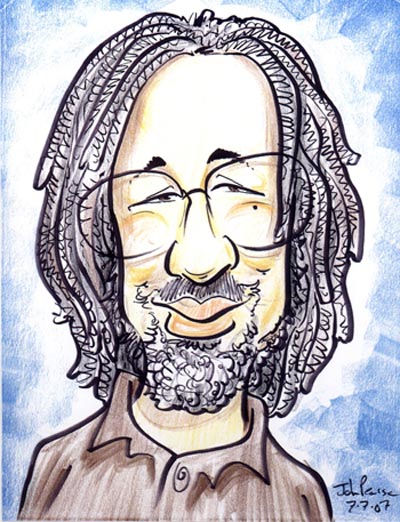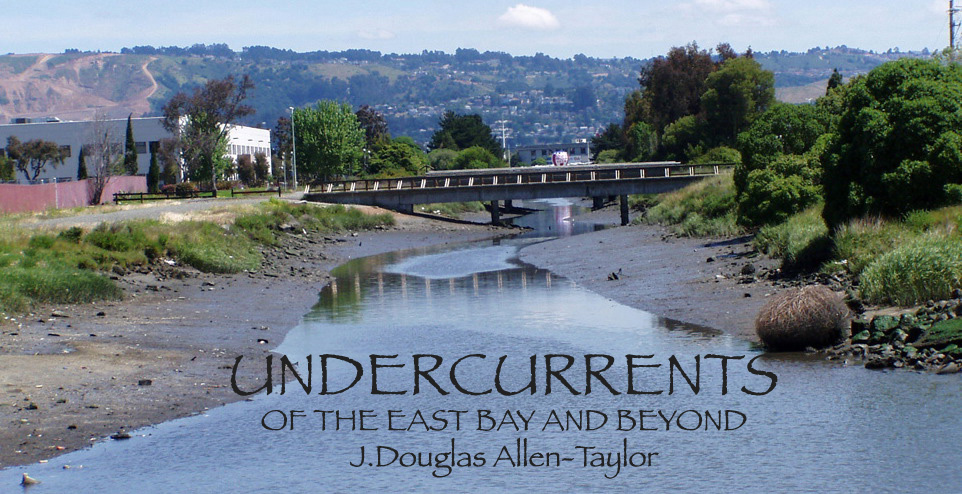|
|
CULTURAL DIFFERENCES AND THE OAKLAND POLICE
April 11, 2008
Since the division of the Oakland Police Department into three geographical districts late last year—a move that is key to Mayor Ron Dellums’ goal of moving OPD into a community policing model—the mayor has begun quietly going around to meetings of the city’s various Neighborhood Crime Prevention Councils, trying to get a community assessment of how the new police realignment is working.
In mid-March, the mayor spoke and was spoken to at the Chinatown NCPC, a group that conducts its meetings largely in Cantonese, and draws Cantonese-speaking members from all over the city. At the meeting that attracted an overflow crowd of more than 200, the Chinatown Chamber of Commerce was circulating a petition calling, in part, for more bilingual officers in Chinatown. One of the meeting participants, a merchant, explained those concerns to the mayor, the chief of police, and other city officials present.
“I hope that the patrolmen who are assigned to Chinatown understand our culture,” the merchant said. “We do a few things here that are illegal. We double-park, and we jaywalk. If the patrolmen come down hard on that, they will just drive people away, and it will hurt business in this area. Ask them to put out notices in the [Chinese language] papers, and give out warnings first. Tell them to lighten up.”
In his remarks, translated in Cantonese as he went along, Dellums agreed that “there ought to be more Chinese-speaking police officers. That’s a policy I’m fully committed to.”
There is every reason to see why this would be a good policy.
In 2003, anger erupted in San Jose’s large Vietnamese-American community following the shooting death of 25 year old Cau Thi Bich Tran, a mother of two, by San Jose Police after the police say the woman threatened them in her home with a knife. Local Vietnamese newspapers reported that Tran had locked herself out of her bedroom and was trying to jimmy the lock with a dao bao, what they described as a common Vietnamese vegetable peeler, and was gesturing with the object to the police in an effort to explain what was happening. Both language and cultural differences between Tran and the police may have contributed to the assumption by the police officers that they were being threatened.
And it is easy to see the cultural differences between the rest of Oakland and Oakland’s Chinatown, with Chinatown’s enormous influx of Chinese-speaking residents and an atmosphere that one imagines replicates Hong Kong or other major Chinese cities. Hiring officers who can enforce the law while understanding and appreciating those differences seems like, well, the exercise of good common sense.
It is unfortunate that such good, common sense does not extend to another major segment of Oakland’s diverse population—African-Americans. Here the assumption is that because there is no new source of African-American immigration since the days of the slave trade—immigrant Africans, Jamaicans, and African-Puerto Ricans constitute a related but distinctly different group—because of years of assimilation, and because of access to political power since the civil rights era, African-Americans are different from the rest of the population, but not so different that they—we—merit special cultural consideration and treatment in the same way that, say, Chinese or Vietnamese-Americans do.
Unfortunately, one of the ironies of the Black Experience is that because it has had so much influence on American cultural life, there are vast numbers of non-African-American people in the United States who stubbornly insist that they have had it and that, therefore, the Black Experience is indistinguishable from the American experience.
But this is simply not true.
I give a small example, to make a larger point.
In a television interview some years ago, singer-composer Billie Joel talked about growing up during the years when African-American and European-American music was strictly segregated. He recalled hearing Ray Charles songs on late-night radio, calling the music “wild” (his face lighting up as he said it), and saying how much it inspired and influenced him in the later creation of his own music.
I grew up on Ray Charles music. He was one of my father’s favorite artists. I would describe it in many ways, but never “wild.” It reminds me of backyard gatherings with my parents’ African-American family friends, my mother’s fried chicken and potato salad, the safety of a childhood around known and friendly surroundings. When Charles “What’d I Say” came out it shocked many white folks with what they believed was its reproduction of raw, “jungle” sex. To be honest, it wasn’t until the movie “Ray” came out a couple of years ago that I realized anyone thought the song was anything more than a jumping summer tune. I listen to it now, not to be titillated, but to be reminded of family life and people long since passed.
Between Billie Joel and I, therefore, there is a distinct difference in the meaning of the Black Experience.
I have heard enough and seen enough and lived long enough to have become quite comfortable in my own culture, and while I am interested in how Mr. Joel sees it, it does not have any influence over how I see myself, or in what I put on my CD or mp3 players when I get home at night.
But there are areas where the opinions of the majority culture have a profound—and sometimes detrimental—effect on some segments of the African-American community. That is most evident with African-American youth, and in the distinct African-American-derived cultural direction that is called hip hop.
The success of hip hop on a national media scale hides the deep suspicion and mistrust that it is greeted with by many people who meet it on the streets of a city like Oakland. Minstrel show music used to be the dominant, driving force in American culture—it is no accident, after all that the first talking picture in America, “The Jazz Singer,” featured an Al Jolsen recreation a cork-blackface, down-on-one knee singing of “Mammy.” Hip hop has supplanted that, and it is impossible to imagine American advertising or a major American sporting event (remember when the Black-Eyed Peas’ “Let’s Get It Started” used to start every NBA game?) without hip hop’s driving beat and potent lyrics.
But just as blues music used to be synonymous—amongst some observers—with Saturday night shootings and knife-cuttings, hip hop culture is intertwined in some peoples’ eyes with crime and violence. In a recent League of Women Voters forum with candidates for Oakland City Council’s At-Large seat, for example, candidate Charles Pine—who is campaigning on a law and order platform—talked of how crime and violence is ruining Oakland, mentioning the problems of “sideshows” and “boom boxes” in the same breath. Boom boxes?
Oakland’s war on sideshows provides probably the best example of this intermixing, in which it is difficult to see whether the actual target is violence, people doing donuts in the middle of the street with their cars, people playing loud music while driving in their cars, or simply large, unregulated crowds of African-American youth in Oakland. Oakland police and officeholders, like Mr. Pine, seem to go after all of them, interchangeably. (One remembers the most infamous incident when, under California’s Oakland-inspired anti-sideshow law, an Oakland police officer once impounded the van of a coach taking basketball players back home in East Oakland because the police officer charged that the coach was playing his radio too loud.)
This culture war—if we can call it that—has had profound repercussions on Oakland gatherings. Two of the city’s most successful festivals—Carijama and the Festival at the Lake—both went out of existence because of clashes between African-American youth and Oakland police. Oakland’s ability to successfully operate a downtown night-time entertainment district has been severely hampered by similar problems, causing the shutdown of Sweet Jimmy’s and other establishments attracting an African-American clientele, and curtailing events at Geoffrey’s. Some of these problems involved street violence, but others—how many, it is difficult to say—involved difficulties directly resulting from the way Oakland police officers have handled crowd control.
Too often, discussions of such activities come down to a laying on of “blame.” But that may be a mistake. Sometimes it is merely a matter of handling a situation differently because of seeing the world differently, and that makes all the difference in the world.
I once saw OPD Tactical Squad members trying to clear a block of International Boulevard between 88th and 87th Avenues of a crowd of African-American young people following an East Bay Dragons Motorcycle Club street fair on an adjoining side street. (Why the Tac Squad needed to clear the street is another matter; the young people were just standing along the storefront, talking, in their own neighborhood, and nobody seemed to be causing trouble; the Tac Squad appeared to be going on the assumption that any “unauthorized” gathering of young African-Americans in that section of Oakland constituted a problem.) In any event, a burly Tac Squad officer gave the order to disperse, but none of the young people moved. While the squad was preparing to make a sweep of the block—something that might, indeed, have caused problems—one of the East Bay Dragons officers walked down the street, quietly telling the gatherers, “Allright, y’all. The fair’s over. It’s time to go.” Within moments, without grumbling, the sidewalk cleared.
Why was a single East Bay Dragon officer able to clear the street of young African-Americans, with no problem and no threats, while the OPD officers were not? Partly I just don’t know, since I didn’t talk with the individuals who dispersed, and part of it is too complicated to break down in a column. But in large part, I believe, it was because the East Bay Dragon officer was able to talk in a language that the young African-Americans understood, and by that I don’t mean he was talking a language other than English.
And that is the crux of the difficulty in understanding the similarities of the cultural needs of Oakland’s Chinatown and some of Oakland’s African-American communities. And while these cultural needs of Oakland’s African-American community in part involve the need for more African-American officers, the issue goes far beyond that.
Does Oakland’s Chinatown need police officers who are knowledgeable of and sensitive to the culture of that community? Absolutely. The same is true for large sections of the city’s African-American community. Outside of their boundaries, those communities are not so well-known as many of us think.
|

